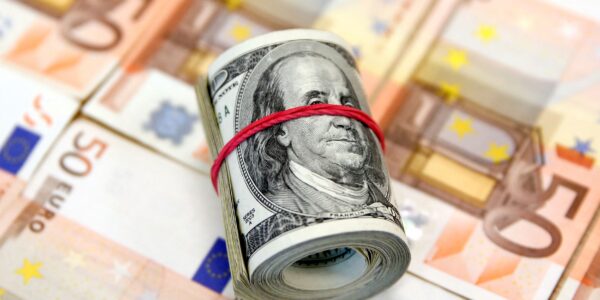What prompted the euro’s loss of value and what’s its impact?
The euro exchange rate has been falling for months and is now at the same level as the US dollar. A year ago, one euro cost $1.20, and by the beginning of 2022, it had already plunged to $1.13. Since then, the depreciation continued and culminated in a brief parity with the US dollar on Tuesday, before dropping below $1 on Wednesday.
Experts identify two main reasons why the euro has lost value, one being the soaring inflation in the euro area EA, Sushanta Mallick, professor of international finance at Queen Mary University of London, told
The inflation in the EA averaged 8.6 percent in June with 14 small euro area economies experiencing above-average inflation up to as high as 22 percent in Estonia. Only five euro area economies are below this EA average, he said.
This rising trend is on the back of higher energy prices due to the Russia-Ukraine conflict, he added.
Indeed, the US economy has been far less affected by the Ukraine war than Europe, which has thus far remained somewhat immune to the volatility in oil and gas markets, given their oil reserve and use of alternative sources of energy, explaining why the US dollar is appreciating relative to euro, Mallick said.
Safe haven status
Moreover, in contrast to Europe, US interest rates have been rising for several months, which makes investments in the US dollar area more attractive, according to Lucio Sarno, professor of finance at the University of Cambridge.
The increasing interest rates in the US attract further investment in dollar assets, and this is in addition to the strong demand for the dollar driven by its safe haven status at times of war, he told
At the end of January, the US Federal Reserve Bank’s (FED) announcement to initiate a series of consistent and significant interest rate hikes alone caused the US dollar to gain strength. The euro, in the meantime, has lost another 10 percent of its value.
Although the European Central Bank (ECB) is likely to raise its interest rates by 0.25 percent this month, the FED raised its benchmark interest rate by 0.75 in June, marking the most considerable increase in nearly 30 years.
The US is raising interest rates much more aggressively than the ECB can do now or in the near future, said Sarno.
ECB’s dilemma
Moreover, while raising its interest rates might be the first step for the euro to recover, he said the ECB faces a financial conundrum.
The ECB is caught in the worse dilemma a central bank can face: on the one hand, inflation is soaring and requires an increase in interest rates, on the other hand, the eurozone’s growth is anemic and would benefit from low-interest rates, Sarno said.
Ultimately, the fall in the euro is making the inflation problem even worse than it already is by importing further inflation because of the weak euro; about half of imported goods in the eurozone are invoiced in the dollar, so the pass-through from a weak euro to high inflation is inevitable as more euros are needed to pay for those imported goods, he said.
Consumers can hence expect even higher prices. Above all, the costs of energy and raw materials threaten to rise since for the situation to normalize growth is needed to prevent the rising cost of living from eroding the purchasing power of individual households. Fiscal policy is the only way out, said Mallick.
The only, potential upside of a weak euro is a possible surge in demand due to the exchange rate could therefore lead to the feared economic slowdown being at least slowed down in some European countries, he added.
A weakened euro can benefit euro area exports, particularly for Germany and France. Germany was already enjoying a high current account surplus; a weaker euro should improve its competitiveness.


 For all latest news, follow The carefulu Google News channel.
For all latest news, follow The carefulu Google News channel.




